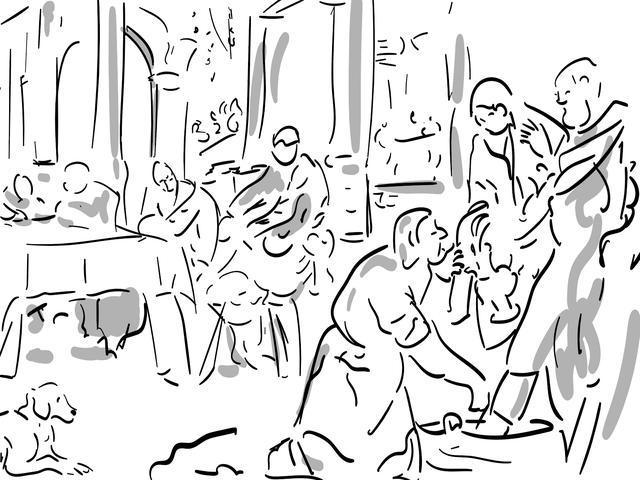The Lavatory

"The Lavatory" by Tintoretto is a masterpiece of Italian Renaissance art, showcasing the artist's exceptional talent and skill. Painted between 1548-1549, this painting depicts a poignant scene from the Gospel of John, where Jesus humbly washes the feet of his disciples during the Last Supper. The composition is rich in symbolism and emotion, capturing the moment of humility and servitude with great depth and detail.
In the center of the painting, Jesus and Saint Peter are portrayed engaging in the act of foot washing, with other disciples surrounding them at the table. The room where the Last Supper takes place is meticulously depicted, with intricate details such as the table, the disciples' postures, and the dog in the foreground adding to the realism of the scene. Tintoretto's use of light and shadow creates a dramatic effect, drawing the viewer's eye to the central figures and enhancing the overall composition.
One of the most striking aspects of "The Lavatory" is its off-center composition, which was intentional on the part of the artist. Originally displayed on the right wall of a long room, the painting was designed to be viewed from a specific angle, allowing believers to see the main episode of Jesus washing the disciples' feet up close. The perspective effect is further accentuated by the foreshortening of the table and the geometric patterns of the paving, creating a sense of depth and dimensionality in the artwork.
In the background of the painting, a cityscape reminiscent of Venice can be seen, complete with classic architecture and canals. The cool, ethereal light that bathes the scene adds a dreamlike quality to the composition, transporting viewers to a different time and place. This juxtaposition of the sacred and the secular elements in the painting reflects Tintoretto's mastery of both religious and secular themes, showcasing his versatility as an artist.
"The Lavatory" originally adorned the presbytery of the church of San Marcuola in Venice before coming into the possession of Charles I of England. After his execution, the painting was acquired by Don Luis de Haro and eventually gifted to Philip IV. It found its way to the sacristy of the Royal Monastery of El Escorial before finally being housed in the prestigious Prado Museum in Madrid, where it continues to captivate visitors with its beauty and significance. As a must-see attraction for art enthusiasts and history buffs alike, "The Lavatory" stands as a testament to Tintoretto's enduring legacy and artistic genius.
© ChatGPT 3.5